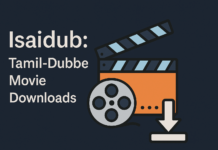Section 508 is an amendment made in 1998 to the Rehabilitation Act of 1973. The amendment placed a new emphasis on federal agencies being required to make their “EIT” (electronics and information technology) accessible to people across the board (i.e. disabled users).
The 90s saw the birth of the modern internet, and much of what we now take for granted was being tested, developed, and implemented into the market during this time. Section 508 standards were created specifically because of these new industry developments.
The federal government knew that technology was going to rapidly change the way people communicate, behave, and interact with one another, so they created Section 508 as a way to ensure accessibility across all user bases.
The Section 508 compliance technically only applies to federal agencies/organizations, as well as companies that do business with federal organizations (e.g. any business operating as a B2G company). If you’re still confused as to what section 508 is, how it can affect your business, and what specific standards need to be met (to be considered compliant), we dive into all these topics (and more) below.
ADA vs WCAG vs Section 508
If you’ve been researching how to make your business’s website complaint, you’ve most likely come across a few different sets of compliance standards (i.e. ADA, section 508, or WCAG). All of these compliance standards relate to web accessibility, however, the ADA differs from WCAG, which also differs from section 508.
The ADA
The ADA (Americans with Disabilities Act) is a federal law that prohibits the discrimination of disabled people. The ADA applies to both web-based discrimination and real-world discrimination.
Also read: How Tech Can Help You Better Understand Your Target Market
WCAG
WCAG is a set of actual guidelines laid out by the W3C (World Wide Web Consortium). The purpose of W3C creating WCAG was to provide a specific set of standards for agencies, businesses, and individuals to follow when creating digital content (to enhance accessibility for disabled users).
Section 508
Section 508, as we’ve already covered, is a specific amendment to the Rehabilitation Act of 1973, which requires that federal agencies (and businesses operating in the B2G space) make their electronic/digital technology (e.g. websites) accessible to the disabled population.
Why Becoming Compliant Is Worth It
If you specifically need to become compliant with section 508, the benefits are absolutely worth the relative effort it would take to ensure compliance. Section 508 requires that federal agencies/organizations (and those who do business with them) are completely accessible (in regards to their web-based content).
What happens if you aren’t compliant? Lawsuits. Lots of them. Not being compliant with section 508 opens you/your organization up to a privy of lawsuits and legal complaints. If you aren’t’ compliant, you’re vulnerable. Even the DHS (one of the biggest federal agencies in the entire world) has been sued for not being accessible.
This should be of special importance to smaller businesses that operate in the B2G space. Do you have the capital to fight a lawsuit? What about three per year? Contrary to popular belief, disabled people use the internet (a lot, actually).
Tens of millions of disabled internet users are getting tired of not being able to properly use the web – which directly translates to an increase in complaints and lawsuits. If you weren’t taking compliance seriously before this, I’m sure you are now. Another major reason why becoming compliant is a good idea is because certain government agencies actually require it of their vendors/contractors (which could mean increased business for your company).
Also read: Tech and Teens: 5 Gadgets Teens Love Using
Start Your Compliance Journey With a Strategy
Like anything else in life, in order to be successful in regards to compliance, you need a plan. Not just a basic plan with the end goal of becoming compliant though, but a highly detailed strategy that lays out exactly what your organization needs to do to achieve compliance.
While many people/organizations try to keep their compliance testing/development in-house, it’s also common to have this work contracted out to a firm that specializes in compliance testing/audits. Performing an entire compliance audit on your own, while certainly possible, has the potential to be incredibly time-consuming.
Using the latest WCAG standards (which as of 2020 happens to be WCAG 2.1) should be the primary measuring system of any compliance strategy. WCAG focuses a lot on specific formats, standards, and types of content that need to be made accessible. W3C’s website on WCAG is an excellent resource to learn more about how exactly you can start becoming compliant with section 508.
Also read: A Brief Look at How New Technologies Have Transformed Our Daily Lives











